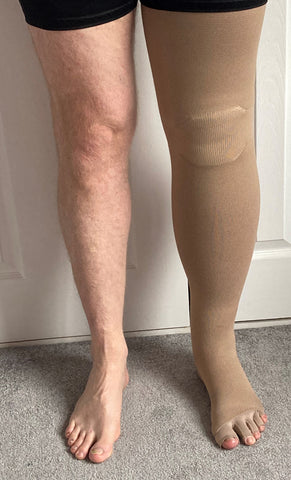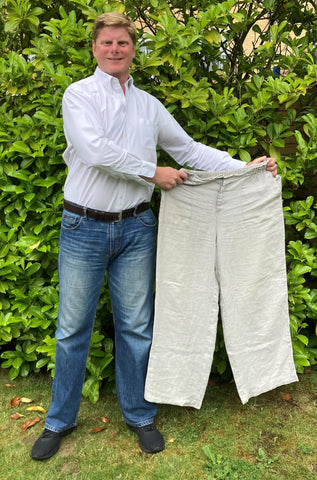Lymphoedema is a chronic and often debilitating lifelong disease that can have a detrimental effect on both physical and mental wellbeing. It affects millions of people worldwide but isn’t widely recognised or treated appropriately. Gentle Grip want to help spread the word and support those living with this lifelong, incurable disease, so have asked Matt Hazledine, founder of Lymphoedema United to tell us more about this disease.
What is Lymphoedema?
Lymphoedema is the presence of chronic swelling (oedema) that occurs because of a failure of the lymphatic system to drain fluid from the spaces in-between the cells in our body. It may develop in someone with a previously healthy lymphatic system that has been damaged (for example, by cancer treatment) and this is called ‘secondary lymphoedema’. This is the most common type of lymphoedema. ‘Primary lymphoedema’ occurs when someone is born with an abnormal lymphatic system. There are many different types of primary lymphoedema, and it should not be considered as one single condition.

Specialist Care and Self-Management
Lymphoedema is not particularly well-known in some sectors of the medical profession and, as such, isn’t always diagnosed correctly initially. Knowledge is power. If you are showing symptoms of lymphoedema, it pays to research the disease using reputable sources and if you think that they apply to you, explain this to your GP and ask for a referral to a lymphoedema specialist.
The four cornerstones of self-managing lymphoedema are:
1. Compression Garments
- Most people living with lymphoedema will endure the daily ritual of donning and doffing of compression garments. Some garments, typically circular knit, can be supplied ‘off the shelf’.
- More bespoke made-to-measure garments, typically flat knit, can be produced to order specific to your limb shape and size. Speak to a qualified Lymphoedema Therapist.
2. Good Skin Care
- Lymphoedema can cause the skin to thicken and become dry, sometimes cracking, which means the skin surface is more likely to become an entry point for bacteria and possible subsequent infection.
- Regular cleansing and moisturising to keep the skin supple and intact will keep the skin hydrated and in good condition, reducing the risk of developing infection which may worsen your lymphoedema.
3. Healthy Lifestyle and Movement
- Unlike the heart, the lymphatic system doesn’t have a pump, so we need to help it along. When we move our bodies, our muscles pump and we breathe deeper. These actions increase the flow of lymph around the body.
- This prevents or reduces any swelling, as well as helping our body get rid of bacteria and other unwanted substances.
4. Manual Lymphatic Drainage
- Manual Lymphatic Drainage (MLD) is more a skin treatment than a form of massage. It is a slow, gentle, low-pressure, rhythmic and repetitive technique which stretches and relaxes the skin, and varies the pressure, in order to increase the functioning of the lymphatic system.
- A range of specialised movements follow the direction of the lymphatic system, working from the neck down to the limbs.

Information and Support
It is important to source trusted information from lymphoedema experts and recognised organisations and charities. Lymphoedema United provides a free membership one-stop-shop website, to help you to learn more about the condition and signpost you to find expert help and product solutions.
There is also a Meet the Members section, with others sharing their experiences and tips, ensuring you are NOT alone in this community.
Socks
If you have lower limb lymphoedema, wearing socks with elasticated tops can leave an indentation in your calf. This could reduce the flow of lymphatic fluid and therefore impair or slow down the lymphatic drainage, resulting in increased swelling in your ankles and feet.
A sock with a gentle grip at the top shouldn’t cause an indentation and therefore should not impair lymphatic drainage.
Lymphoedema United are proud to endorse IOMI Footnurse and Gentle Grip socks.
Written for gentlegrip.co.uk by Matt Hazledine, Lymphoedema United.
 Log In
Log In




